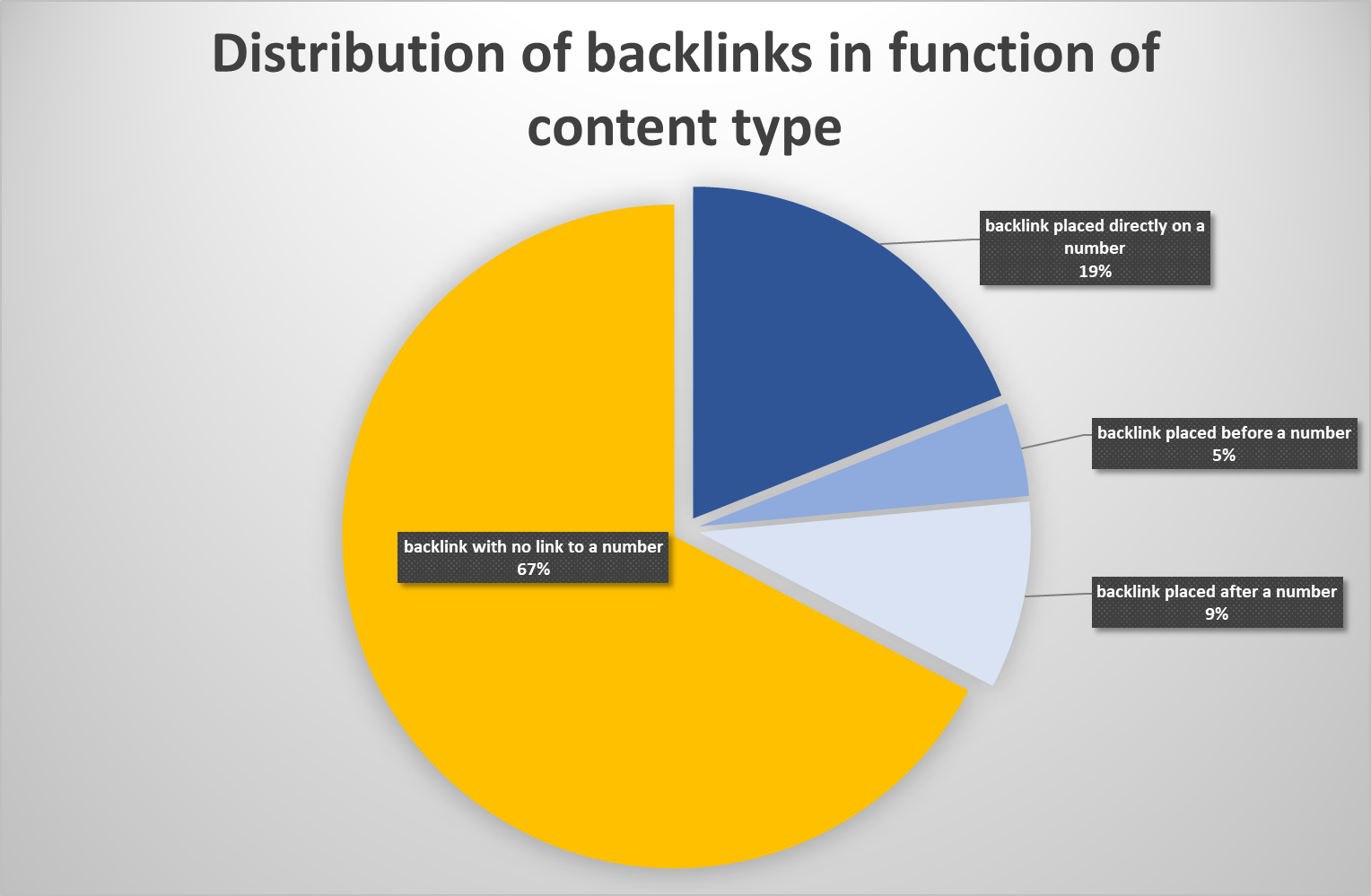There is nothing more important than backlinks if you want to adopt an inbound marketing strategy to generate leads. According to Ahrefs, my website has over 156,000 backlinks. I wanted to know what type of content generated these backlinks, so I researched all my backlinks from websites with a Domain Ranking (DR) of at least 20. I was surprised to discover that one type of content generated 35% of my backlinks. I explain it all in this article.
Contact IntoTheMinds marketing agency
My backlink research in a nutshell
- I researched all my backlinks over the last 6 months to the domain intotheminds.com
- 35%of my backlinks are linked, directly or indirectly, to a figure or statistic quoted on my blog
- 46%of websites more reputable than mine (DR=58) place backlinks on my figures or statistics
- Over the last 6 months, I have received 340 do-follow linksfrom websites with a Domain Ranking of>20
- 10% of my backlinks came from rotten websites or link farms
- 100 linkswere directly linked to a statistic or figure quoted on my blog
- 3% of links were placed directly on a figure or statistic
- In 14%of cases, the reference to a figure was placed directly before (4.7%) or after (9.3%) the backlink
- 5 additional links were indirectly linked to a figure quoted on my blog (example: “the size,” “the increase,” etc.)
First, I have never bought a single backlink. My SEO strategy couldn’t be simpler: create good content and let the chips fall where they may. It may sound completely naive and amateurish, but it works. My Domain Ranking (DR) is 58, according to Ahrefs, and I have over 156,000 backlinks from 4100 domains. I’m proud to have backlinks from government websites .edu sites, … But how do I get even more websites to add backlinks? To do that, I had to understand what content they liked best.
My SEO strategy couldn’t be simpler: create good content and let the chips fall where they may.
Understanding the type of content that generates backlinks
My problem was to understand what makes other websites link to intotheminds.com. If I want to progress, I need to understand my strengths to capitalize on them and increase my Domain Ranking. It was a little by chance that I once hypothesized about the origin of these backlinks.
Ahrefs is my reference tool for SEO analysis. I like to check every week where new backlinks are coming from. Ahrefs proposes various options for filtering them. I systematically activate the “do follow” filters and am only interested in backlinks from websites with a minimum reputation. To progress, you need to obtain backlinks from websites with a higher ranking than yours. I therefore limit my analyses to websites with a Domain Ranking of at least 20. This is how I came to see a strange phenomenon emerge.
One type of content stood out from the rest
As I looked at the links pointing to my website, I noticed many backlinks were placed directly on figures. In other words, other websites were reusing the figures I’d published and citing my website as the source. I wanted to check whether the statistics were a type of content that accounted for a significant proportion of my backlinks. I was not disappointed.
I manually analyzed 340 do-follow backlinks in website content with a minimum domain ranking (DR) of 20. I then manually checked each incoming link to ensure no 404 errors. I then eliminated the “rotten” websites, i.e., those belonging to link farms or whose content made no sense.
35% of my backlinks are linked to a number or a statistic
My hypothesis was confirmed as my analysis progressed. A significant proportion of backlinks were linked to a number or statistic: 35%.
As in the two examples below, 19.3% of my backlinks are placed directly on a number or statistic.

Less often (4.7% of cases), the reference to the figure or statistic is placed before the link itself (see example below) or after (9.3%).
46% of the most reputable websites place backlinks on numbers
As I explained in the introduction, gaining a reputation requires collecting backlinks from websites more reputable than your own. In other words, if your website has a Domain Ranking (DR) of 20, you will only achieve a higher DR if you collect backlinks from sites with a DR higher than 20.
For this reason, I wanted to analyze how backlinks on websites more reputable than mine (DR=58) could evolve. Over the last 6 months, I have had “only” 80 backlinks from such websites. And, divine surprise, 46% of the backlinks were directly or indirectly linked to a number or statistic. But how to explain it?
Why so many backlinks to figures?
Of course, I am not in the head of those who decide to add a link to my website. But I do have an idea as to why they do it: confirmation bias. When someone writes an article, it’s a safe bet that they’ll be looking for arguments to reinforce their position. Figures and statistics are, therefore, natural allies for content creators. I attribute the success of my articles to this.
Over the coming weeks and months, you will see a noticeable change on the blog. I am going to concentrate on writing articles that systematically include statistics. You will notice that the article you are reading is itself full of numbers. 😊
Posted in Research.





